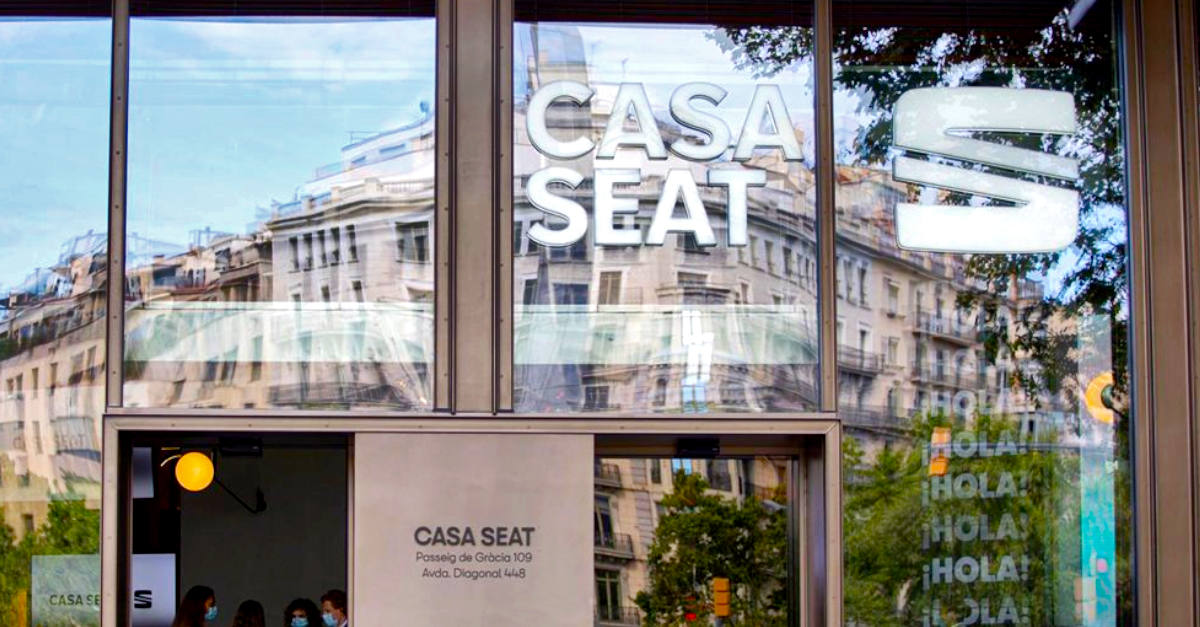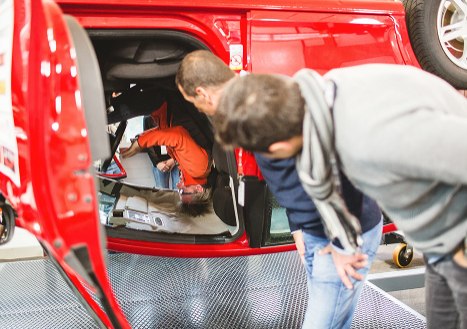
CogniFit Helps CASA SEAT in “Enjoy Your Drive” Series
CogniFit Helps CASA SEAT Promote Driver Safety Through Cognitive Assessments
We are excited to announce a collaboration where Cognifit helps CASA SEAT with their Enjoy Your Drive series focused on training in road safety.
But how does this pairing work? And how did this mobile-centric company turn what could have been a boring safety seminar into something fun and dynamic? Let’s take a closer look…
WHAT IS CASA SEAT?
CASA SEAT is a branch of the SEAT automotive company. However, instead of just churning out cars, they label themselves as a forward-looking project – one that explores the future of mobility.
They look at new technologies and weave these advances with creative design. CASA SEAT is one of these projects. The space in downtown Barcelona hosts events, activities, and creative spaces such as…
- A gastronomic restaurant that ranks in the top 100 in the Macarfi guide. It serves everything from brunch to tapas and tasting menus.
- An open concept coworking space for those who don’t have to commute to an office.
- An auditorium that hosts talks and cultural events.
- A showroom that houses their latest mobility solutions.
CASA SEAT is one of the most exciting organizations of its kind and brings people together around topics such as road safety, sustainable mobility, and alternative transportation.
This is where we come to the unique “Enjoy Your Drive” event.
WHAT IS THIS CASA SEAT EVENT?
The Enjoy Your Drive event, which took place in Barcelona (September 17th through November 30th), was presented in collaboration with Fast Parcmotor and the RACC.
Attendees of the event could join a series of talks and activities focused on learning to enjoy driving in complete safety through activities related to driver education. This included…
- Learning several concepts around first-aid that could be applied to later talks and events. CASA’s Medical Service team included practical examples such as the Rautek maneuver, a key technique to safely remove a person trapped in a car.
- Getting into a “roll-over simulator” – which is a capsule that houses a car interior but with extra safety measures such as padding on the roof and an adjusted seat belt restraint. Participants could then get inside and feel what it would be like to experience a roll-over situation.
- Specialized trainers from RACC and Fast Parcmotor provided attendees with a supervised driving experience. Drivers could learn the appropriate steps to take to ensure their safety and maintain vehicle integrity at all times.

HOW COGNIFIT HELPS CASA SEAT
Something as complex as safely driving a motor vehicle needs more than physical awareness and knowledge of first-aid practices. It also requires drivers to use a broad range of cognitive abilities such as Focus, Visual Short-term Memory, and Processing Speed, just to name a few.
This is why CogniFit has partnered with CASA SEAT to allow attendees to take our Cognitive Assessment Battery for Driving.

Some of these tests included…
- Clicking in one place as fast as you can or clicking in the middle of shapes (as fast as possible) as they appear on different parts of the screen.
- Prediction of shape speed and movement, where different color orbs move in random directions across the screen or along a lined path.
- Listening to music and then stopping at a certain cue – with exact timing being critical for a decent score.
- Seeing distance between 3D shapes – whether in relation to the person or in relation to each other. For example, “which shape is farthest away from the pink ball.”
- Shape appearance memory and reaction, where the user must remember if a shape or audio-spoken word has appeared in the sequence or not, and in what medium.
- Using shapes and numbers of different sizes or higher values. For example, if the word blue is also colored in a blue hue, or a number is higher versus the shape is larger.
- Memorize number sequences until they become unmanageable for that person’s particular level.
- Following a circle while clicking if the word matched a color.
Then what happened?
The final results are then broken down into different categories. These include areas of low, medium, or high risk as well as measurement against rule-following or mental adaptation. The numbers also take into account how old the person is, if they’ve had any previous driving violations, how they feel during different on-road situations (like in a traffic jam).
If the answers form a certain driving style/pattern, that will also appear on the report. But there is also a chance that the results could form a “not specified” style.
However, these are all just the FIRST part of the end-result. There are at least two more pages that include a cognitive profile that related to driving that are broken down into:
- Perception
- Reasoning
- Memory
- Attention
- And coordination
Finally, practices/exercises are recommended to deal with any weak areas.

After visitors took the test, people could see a full report detailing the functioning of their cognitive abilities related to safe and effective driving.
Based on the feedback from the CogniFit driving assessment and the automotive safety experts from CASA SEAT, drivers were able to get a clear picture of their on-road safety skills. This included things like compliance with road regulations and their cognitive capabilities related to safe driving. They also walked away with specific recommendations and a personalized plan of action.
It was truly a wonderful partnership and event, and something CogniFit looks forward to joining again in the future!














